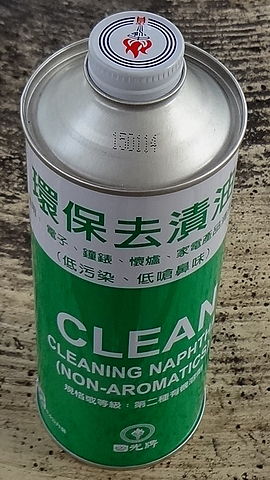Naphtha: Difference between revisions
J.williams (talk | contribs) m (1 revision imported) |
energy>Jmdonev No edit summary |
||
| Line 1: | Line 1: | ||
[[Category:Done 2018-08-03]] | |||
[[File:270px-CPCCT_Cleaning_Naphtha_Non-Aromatics_0.5L_20150114.jpg|400px|framed|right|Figure 1. A bottle of naphtha used for cleaning.<ref>Wikimedia Commons. (June 29, 2015). ''CPCCT Cleaning Naphtha'' [Online]. Available: https://commons.wikimedia.org/wiki/File:CPCCT_Cleaning_Naphtha_Non-Aromatics_0.5L_20150114.jpg#/media/File:CPCCT_Cleaning_Naphtha_Non-Aromatics_0.5L_20150114.jpg</ref>]] | [[File:270px-CPCCT_Cleaning_Naphtha_Non-Aromatics_0.5L_20150114.jpg|400px|framed|right|Figure 1. A bottle of naphtha used for cleaning.<ref>Wikimedia Commons. (June 29, 2015). ''CPCCT Cleaning Naphtha'' [Online]. Available: https://commons.wikimedia.org/wiki/File:CPCCT_Cleaning_Naphtha_Non-Aromatics_0.5L_20150114.jpg#/media/File:CPCCT_Cleaning_Naphtha_Non-Aromatics_0.5L_20150114.jpg</ref>]] | ||
<onlyinclude>'''Naphtha''' is a term used to refer to a group of [[volatile]], [[flammable]] mixtures of [[liquid]] [[hydrocarbon]]s that are used mainly as [[solvent]]s, diluents, or raw materials for [[gasoline]] conversion.</onlyinclude> It is a lightweight [[petrochemical]] feedstock that is separated from [[crude oil]] in the [[fractional distillation]] process along with [[kerosene]] and jet fuel.<ref name=boyle>G.Boyle, B.Everett, S.Peake, J.Ramage. (June 29, 2015). ''Energy Systems and Sustainability: Power for a Sustainable Future'', 2nd Ed. Oxford, UK: Oxford University Press, 2012</ref> | <onlyinclude>'''Naphtha''' is a term used to refer to a group of [[volatile]], [[flammable]] mixtures of [[liquid]] [[hydrocarbon]]s<ref>[2]World Encyclopedia. [Place of publication not identified]: Philip's, 2014.</ref> that are used mainly as [[solvent]]s, diluents, or raw materials for [[gasoline]] conversion.</onlyinclude> It is a lightweight [[petrochemical]] feedstock that is separated from [[crude oil]] in the [[fractional distillation]] process along with [[kerosene]] and jet fuel.<ref name=boyle>G.Boyle, B.Everett, S.Peake, J.Ramage. (June 29, 2015). ''Energy Systems and Sustainability: Power for a Sustainable Future'', 2nd Ed. Oxford, UK: Oxford University Press, 2012</ref> | ||
There are many specific types of naphtha that vary in the amounts and types of hydrocarbons contained in their unique blend.<ref name=" | There are many specific types of naphtha that vary in the amounts and types of hydrocarbons contained in their unique blend.<ref name="oxford">DICTIONARY OF CHEMISTRY; ED. BY RICHARD RENNIE. OXFORD: OXFORD UNIVERSITY PRESS, 2016.</ref>> Refineries can produce various forms of naphtha, and each has specific guidelines in how it should be handled and stored. Generally speaking, the flammability and volatility of naphtha should be taken into consideration as they are significant safety hazards. | ||
==Uses and Safety== | ==Uses and Safety== | ||
As mentioned above, naphtha is commonly used as a solvent. It is used in [[hydrocarbon cracking]], laundry soaps, and cleaning fluids. Naphtha is also used to make varnishes, and sometimes is used as a [[fuel]] for camp stoves and | As mentioned above, naphtha is commonly used as a solvent. It is used in [[hydrocarbon cracking]], laundry soaps, and cleaning fluids. Naphtha is also used to make varnishes, and sometimes is used as a [[fuel]] for camp stoves and as a solvent (diluent) for paint.<ref>"NAPHTHA AND SOLVENTS", Handbook of Petroleum Product Analysis, pp. 88-103, 2015.</ref> Although naphtha has many uses, some forms of it can be dangerous. Many kinds of naphtha can cause skin irritation, upset stomachs, and other health problems if people are exposed to them. Some forms are also [[carcinogen]]s, and thus inhalation or ingestion of the [[chemical]] should be avoided. | ||
==For Further Reading== | |||
*[[Solvent]] | |||
*[[Volatile]] | |||
*[[Hydrocarbon]] | |||
*[[Hydrocarbon cracking]] | |||
*[[Fractional distillation]] | |||
*[[Pollution]] | |||
*[[Carcinogen]] | |||
*Or explore a [[Special:Random|random page]] | |||
==References== | ==References== | ||
{{reflist}} | {{reflist}} | ||
[[Category:Uploaded]] | [[Category:Uploaded]] | ||
Revision as of 21:44, 12 August 2018

Naphtha is a term used to refer to a group of volatile, flammable mixtures of liquid hydrocarbons[2] that are used mainly as solvents, diluents, or raw materials for gasoline conversion. It is a lightweight petrochemical feedstock that is separated from crude oil in the fractional distillation process along with kerosene and jet fuel.[3]
There are many specific types of naphtha that vary in the amounts and types of hydrocarbons contained in their unique blend.[4]> Refineries can produce various forms of naphtha, and each has specific guidelines in how it should be handled and stored. Generally speaking, the flammability and volatility of naphtha should be taken into consideration as they are significant safety hazards.
Uses and Safety
As mentioned above, naphtha is commonly used as a solvent. It is used in hydrocarbon cracking, laundry soaps, and cleaning fluids. Naphtha is also used to make varnishes, and sometimes is used as a fuel for camp stoves and as a solvent (diluent) for paint.[5] Although naphtha has many uses, some forms of it can be dangerous. Many kinds of naphtha can cause skin irritation, upset stomachs, and other health problems if people are exposed to them. Some forms are also carcinogens, and thus inhalation or ingestion of the chemical should be avoided.
For Further Reading
- Solvent
- Volatile
- Hydrocarbon
- Hydrocarbon cracking
- Fractional distillation
- Pollution
- Carcinogen
- Or explore a random page
References
- ↑ Wikimedia Commons. (June 29, 2015). CPCCT Cleaning Naphtha [Online]. Available: https://commons.wikimedia.org/wiki/File:CPCCT_Cleaning_Naphtha_Non-Aromatics_0.5L_20150114.jpg#/media/File:CPCCT_Cleaning_Naphtha_Non-Aromatics_0.5L_20150114.jpg
- ↑ [2]World Encyclopedia. [Place of publication not identified]: Philip's, 2014.
- ↑ G.Boyle, B.Everett, S.Peake, J.Ramage. (June 29, 2015). Energy Systems and Sustainability: Power for a Sustainable Future, 2nd Ed. Oxford, UK: Oxford University Press, 2012
- ↑ DICTIONARY OF CHEMISTRY; ED. BY RICHARD RENNIE. OXFORD: OXFORD UNIVERSITY PRESS, 2016.
- ↑ "NAPHTHA AND SOLVENTS", Handbook of Petroleum Product Analysis, pp. 88-103, 2015.

